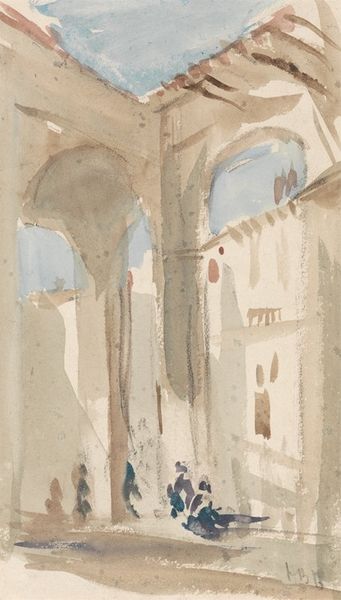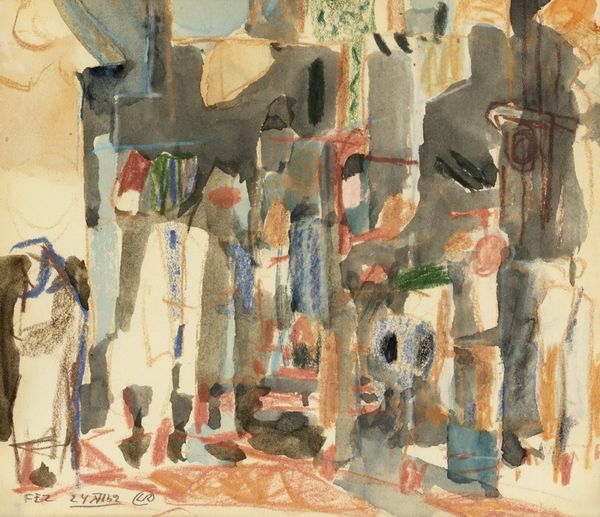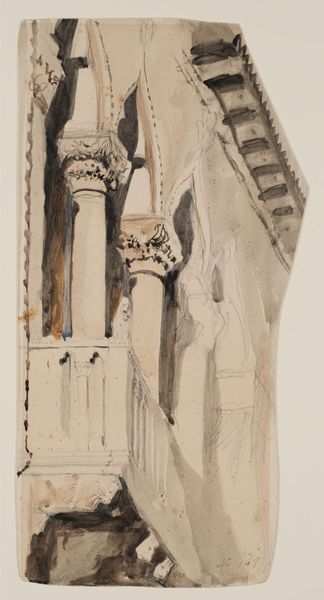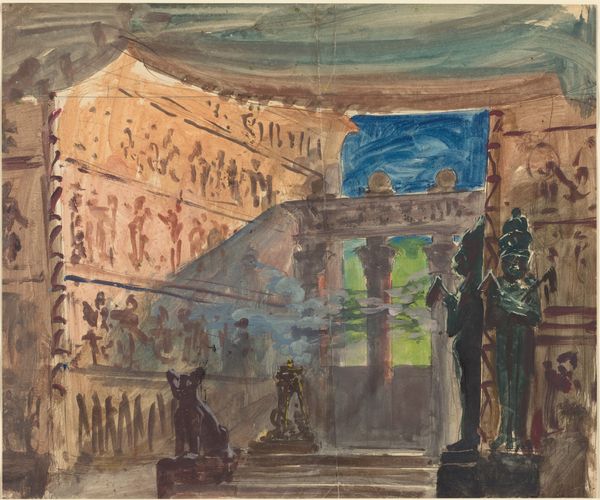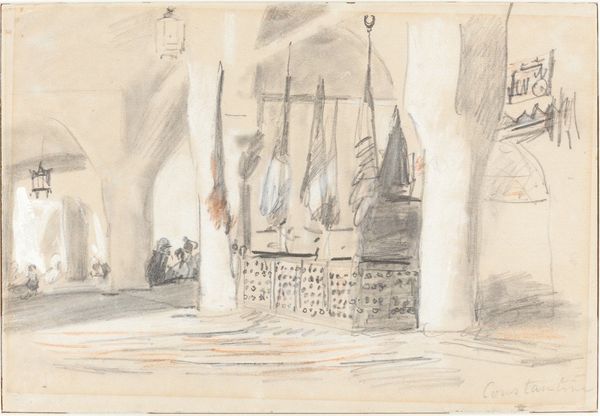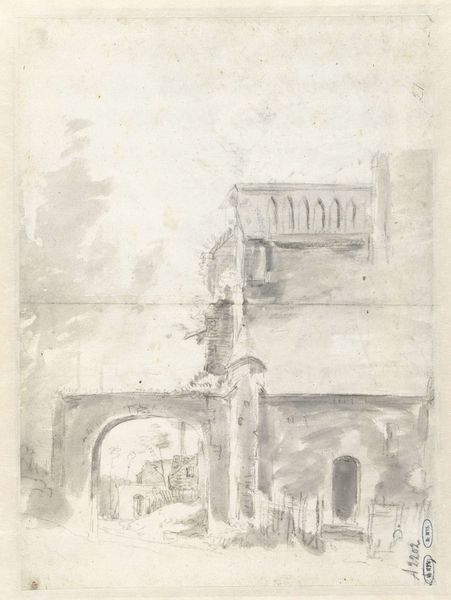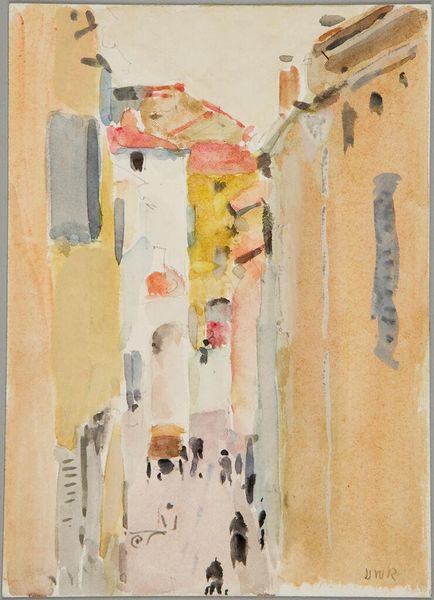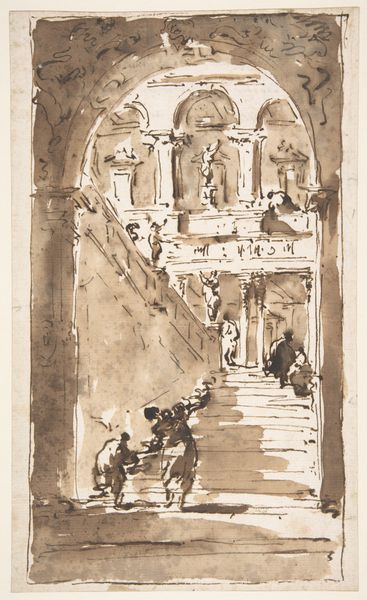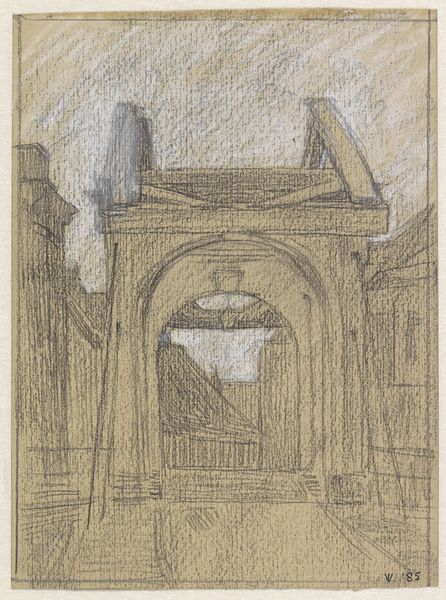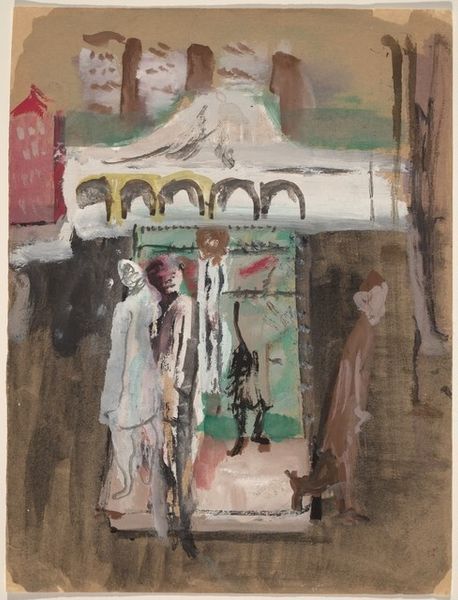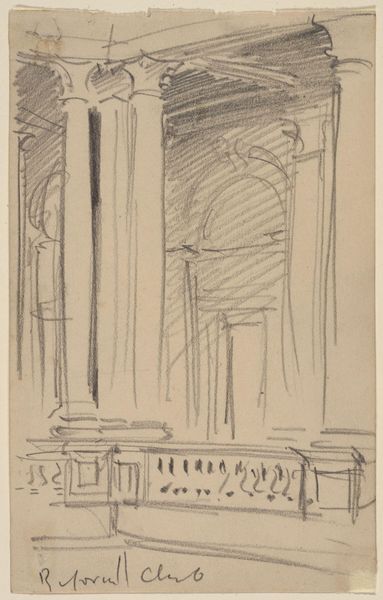
painting, watercolor
#
byzantine-art
#
painting
#
watercolor
#
abstraction
#
cityscape
#
mixed media
Copyright: Public domain US
Editor: This watercolor painting, "Hagia Sophia," by Alexis Gritchenko, dates to 1920. The color palette and the skewed architecture really give it an unsettling, almost dreamlike feel, and the Byzantine style shines through. What do you see in this piece? Curator: I see Gritchenko grappling with representation itself. Think about 1920; World War I had just ended, empires were crumbling, and artistic movements were questioning established norms. To me, this "Hagia Sophia" reflects that upheaval. It’s not a straightforward depiction, but a fractured, abstracted rendering of a potent symbol. The Hagia Sophia represents both Byzantine grandeur and, having been converted into a mosque, Ottoman power. Editor: So, you're saying it's not just a building, but a stand-in for bigger historical and political forces at play? Curator: Precisely. Consider how the people in the painting are represented – almost as mere silhouettes. Are they worshippers, tourists, or something else entirely? Their anonymity further emphasizes the shift from individual experience to the grand sweep of history. Gritchenko prompts us to consider how institutions shape individual identity and perception. It challenges our preconceived notions about the relationship between architecture, power, and the public. Editor: That's fascinating! I had been focused on the aesthetics of the Byzantine style, but I see that he's engaging with a lot more than that. Thanks for shedding some light on its political and historical contexts! Curator: And thank you for seeing beyond the purely visual. That push-and-pull, that questioning, is, in itself, the mark of modern art at its most engaged.
Comments
No comments
Be the first to comment and join the conversation on the ultimate creative platform.
